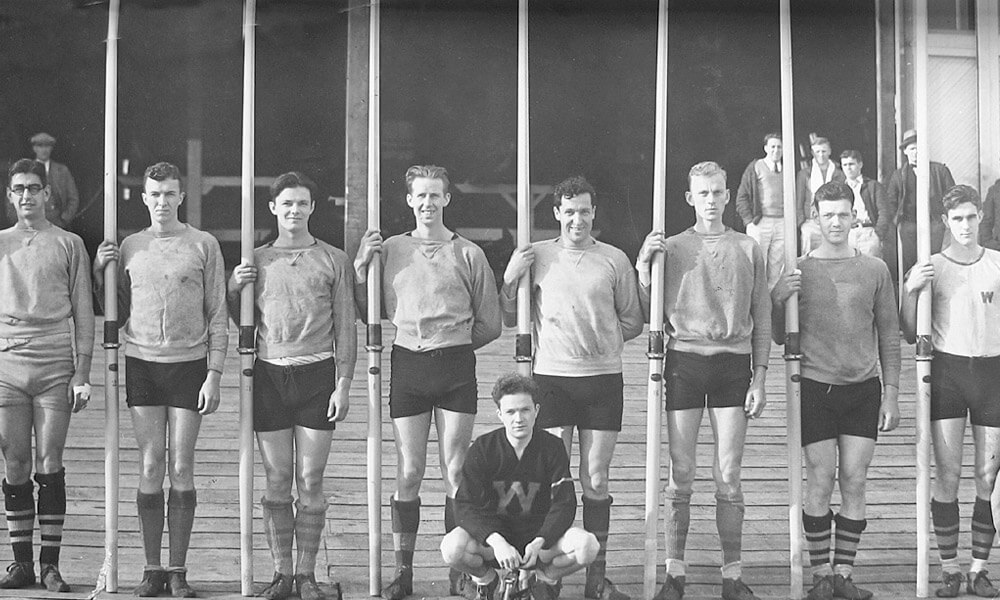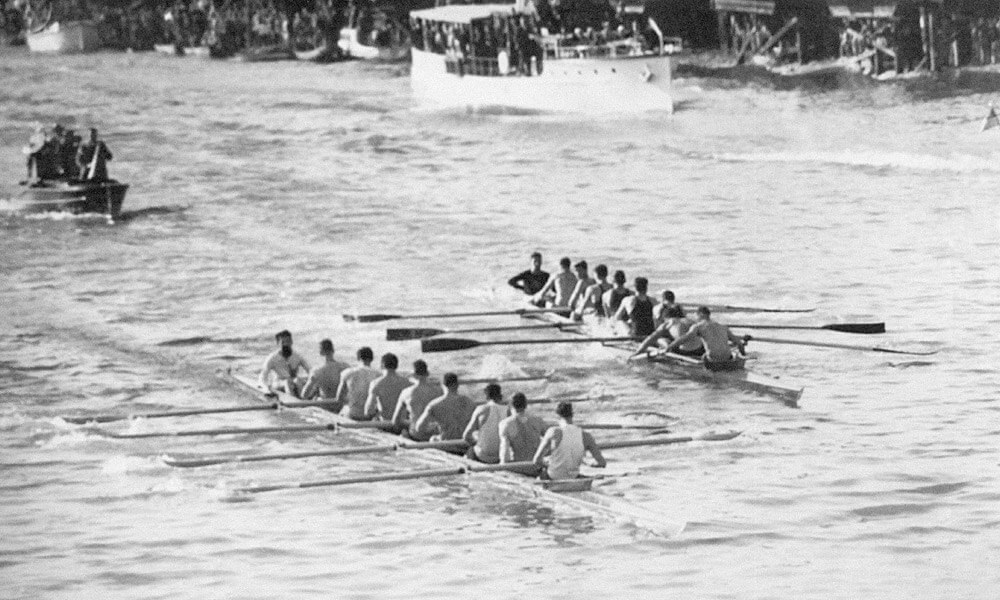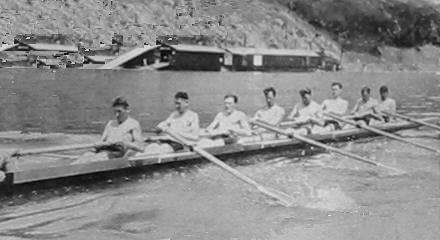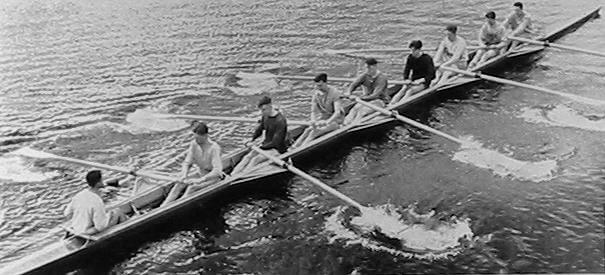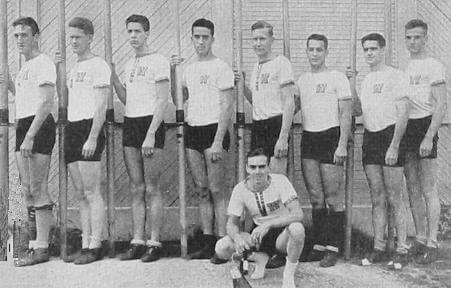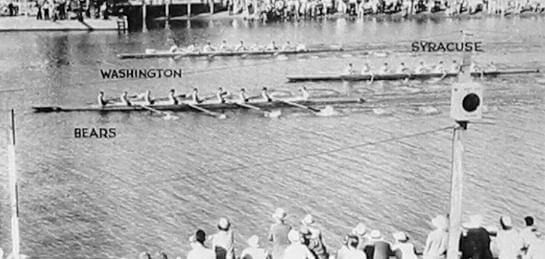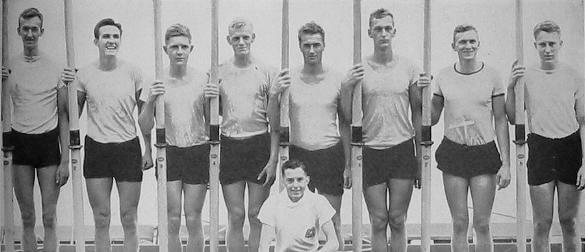Men's Crew:
1930-1939
Al Ulbrickson inherited a powerhouse rowing team in the fall of 1927 from his mentor Rusty Callow. In the two years that followed, Ulbrickson’s squad faced California crews that had vastly improved under the leadership of the former Husky coxswain and assistant coach, Ky Ebright. The results for Ulbrickson were disheartening.
However, by the end of 1929 the team was on an upswing, surprising the field by finishing second at the IRA. Al Ulbrickson – only twenty-four when he took the reins from Callow – was young and was a quick study. In the decade that would follow, he, along with his freshman coach and classmate Tom Bolles, would develop a system that would again produce national champion caliber teams. And one of those teams would win what is still considered one of the greatest victories not only at Washington, but in the history of Olympic sports.

